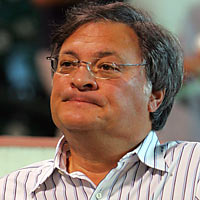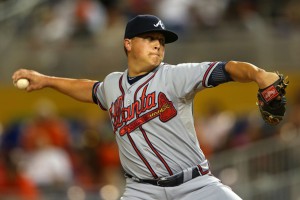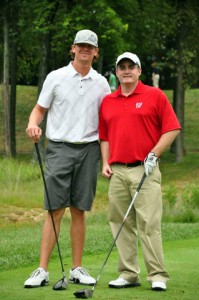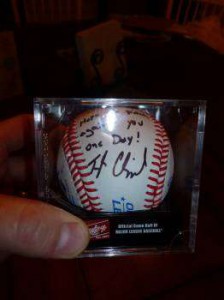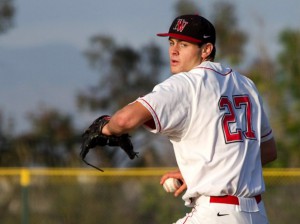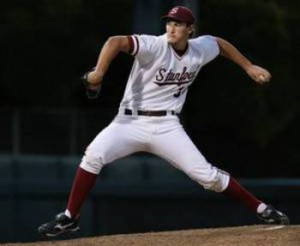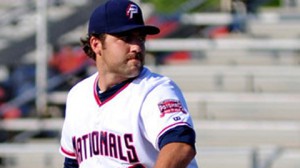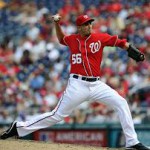
Could Garcia's great stuff translate into a starting role in 2013? Photo unknown via federalbaseball.com
I’ve been thinking about the rotation for 2013, reading some early 2013 Free Agent rankings, and steeling myself for the reality that this team is more than likely to lose Edwin Jackson to free agency. Two primary reasons we probably lose Jackson:
1. He’s one of the best available starters in this coming off season’s FA market
2. He’s likely to command a multi year deal at more money than this team is probably willing to offer.
Considering our “core 5 starters,” Jackson ranks 5th out of 5 in terms of ERA and ERA+, and he’s 4th of 5 in terms of Whip and FIP, and 3rd of our 5 (barely) via xFIP and SIERA. He’s been clearly out pitched this year by our 5th starter Detwiler and isn’t ahead of the big three in anyone’s eyes. So the question is; will the Nats make its 5th starter its highest paid pitcher?
I just don’t think so.
So we’re likely looking for a 5th starter for 2013. The FA market is pretty bare: Zack Greinke is going to command a massive deal for a guy who, honestly, has had one stellar season in 2009 and since has been no better than a 3rd starter. I think the Nats should stay away from him. The Nats should also stay away from promising starters in 2012 but who have injury or inconsistency issues (Dan Haren and Jake Peavy, both of whom likely have their 2013 options declined). Who else is out there that fits the Mike Rizzo mold (hard thrower, high K/9 rates)? Shawn Marcum? Brandon McCarthy? Also injury concerns. How about Anibel Sanchez, Jonathan Sanchez and Ervin Santana? All three guys have good seasons in their immediate past but blew up (or were at best inconsistent) in 2012.
Maybe the above paragraph is even more support for re-signing Jackson frankly; he’s got no injury issues, apparently is a good clubhouse guy and meets Rizzo‘s starter criteria for veteran, hard-throwing innings eater. So maybe this whole article is going to be moot.
Here’s a different take (and the point of this article); some news items came out this week that caught my eye; perhaps the Nats can find a 2013 5th starter internally instead? Christian Garcia has really impressed in 2012, from his stellar minor league numbers to his good performances out of the bullpen in September. And now word has it that the team is considering looking at him as a starter.
I love Garcia’s stuff; he’s a 3 plus pitch guy with a ton of movement on his decent fastball. Here’s some Pitch F/X data for him this year; 95mph average (peaking at 97.8mph), 10mph delta between his fastball and change, and a ridiculous amount of movement on his 12-6 curveball. He’s getting nearly a 20% swing-and-miss rate across all his pitches. Fangraphs.com even did a post specifically on Garcia based on his September performance, featuring an animated .gif of his “stupid good” curve.
That features as a pretty good starter line to me. Perhaps he needs a 4th pitch (his over-the-top delivery could lend itself to a sinking 2-seam fastball, a cutter or even a split-fingered pitch that he could add to his arsenal) to be truly effective as a starter.
Meanwhile, the team has already started the Ryan Perry conversion to starter experiment, and his AA starting numbers in 2012 were pretty good. Pulling this text from my AA-in-review post:
Ryan Perry, astutely acquired for Collin Balester (who failed to impress in Detroit and was DFA’d earlier this year) in spring training and he competed for the MLB bullpen. He featured briefly, was ineffective and was optioned to AAA. The team took a look at his repertoire and decided to try to convert him to a starter in AA. The results? Pretty good; a 2.84 ERA and 1.11 whip in 13 AA starts. Outlook for next season: here’s the problem with Perry; he’s out of options for 2013. He was added to a 40-man roster in April 2009, and burned options in 2009, 2011 and this year. So he has to either make the MLB club or be DFA’d at the end of spring training. So look for Perry to compete for the #5 starter job or be considered trade bait in the off-season.
Can Perry continue his starter performance in spring training in 2013? Could Garcia win the job? Will the Nats pursue a starter on the FA market? Or, as they did in the 2012 off-season will they shock us with a trade that comes out of nowhere?
